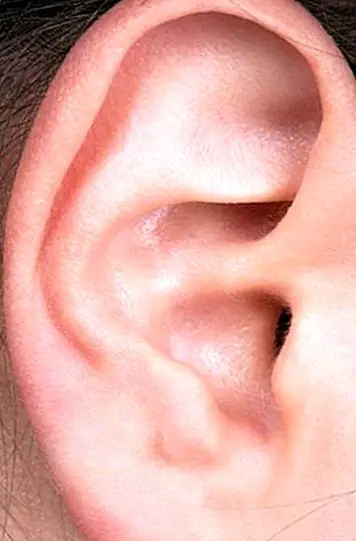How to know what type of skin I have
Did you know that the skin is the heaviest living organ in our body, besides being the largest and longest? It tends to weigh between 3 to 4 kg., And can reach between 1.5 to 2 square meters. It is an organ that, in fact, is in direct and permanent relationship with the rest of the organs of our body, so that any alteration that appears in it can be an indication of the presence of some type of dysfunction or disease .
With regard to the most important functions of the skin, we can establish different basic functions: protection, since it protects us from microbial, chemical, mechanical and physical attacks that come from the outside; transmission, since through different nerve endings it receives tactile, thermal and painful stimuli; exchange, since it helps in the process of regulating body temperature, as well as in the synthesis of vitamin D.

About him skin care, it is appropriate to maintain a correct hygiene every day, using gels of neutral pH and, if possible, made with 100% natural ingredients that are respectful with our skin type. On the other hand, it is also advisable to use nourishing and moisturizing creams, which provide essential nutrients to maintain nutrition as appropriate as possible.
However, It is important to know what type of skin you have to know how to take care of it properly, since it is not advisable to use the same products of both hygiene and beauty, since some are especially suitable for dry skin, and others for oily or oily skin.
Normal skins: neither too fat nor too dry
It is a type of skin that is well balanced. This means that it tends to be a type of skin that is neither too fat nor too dry. That is, it is usually always well hydrated and has a compact texture.

When it comes to taking care of it, it is interesting to use extracts of aloe vera and gels rich in vitamins (especially vitamins A, C and E). It is also appropriate to use moisturizers during the day, and at night use soft nutritional creams.
You have normal skin if you find it well balanced, not being too fat or too dry. It presents fine pores, smooth texture, without impurities and fresh and pink color.
Dry skin: opaque and more cracked
It consists of a type of skin that is located a little beyond normal skin, since it tends to produce less fat or sebum than this. Due, the skin does not have the necessary fat to retain moisture, at the same time that it is not capable of forming a protective 'shield' against external influences.

You have dry skin if you perceive it as opaque or dull, rough and tight. If left untreated, rough appearance or spots, slight peeling, itching and a feeling of tightness may occur.
Oily skin: excessive accumulation of sebum
You have oily skin if you tend to produce excess sebum. It is a type of skin that appears when the different sebaceous glands produce excess fat, which causes an obstruction of the pores.

Although it is a type of skin that has the "virtue" of aging more slowly, it requires a more thorough and greater hygienic maintenance than other types of skin.
The use of oils or greasy creams is not recommended, as they increase the production of sebum and also tend to clog the pores. Yes, it is advisable, however, the masks and toners purifiers. Moisturizing products in gel form or creams made with plant extracts are also useful for hydrating the skin. When cleaning it, it can be done a maximum of 3 times a day, using only liquid or bar soaps.
You have oily skin if it shows shine in areas such as the forehead, nose and chin, and the pores are open and very visible. It is a very shiny skin, pale and thickened, with enlarged pores.
Mixed skins: variations on the face
It is a type of skin in which different types of skin appear in the same face. There is the so-called "fat zone T", which we find on the forehead, chin and nose. In this area the pores are enlarged and impurities, while the cheeks are normal or dry.

It is advisable to use products specially made for oily skin, such as astringent soaps and deep cleansing. However, when it comes to moisturizing the skin and to protect it from the sun, it is best to use products for normal skin.
You have mixed skin if the appearance of your cheeks tends to be normal or dry, but you have a bright appearance on the forehead, chin and nose.
Images | Mr Seb / David / Quinn Dombrowski / Ryan Hyde /



